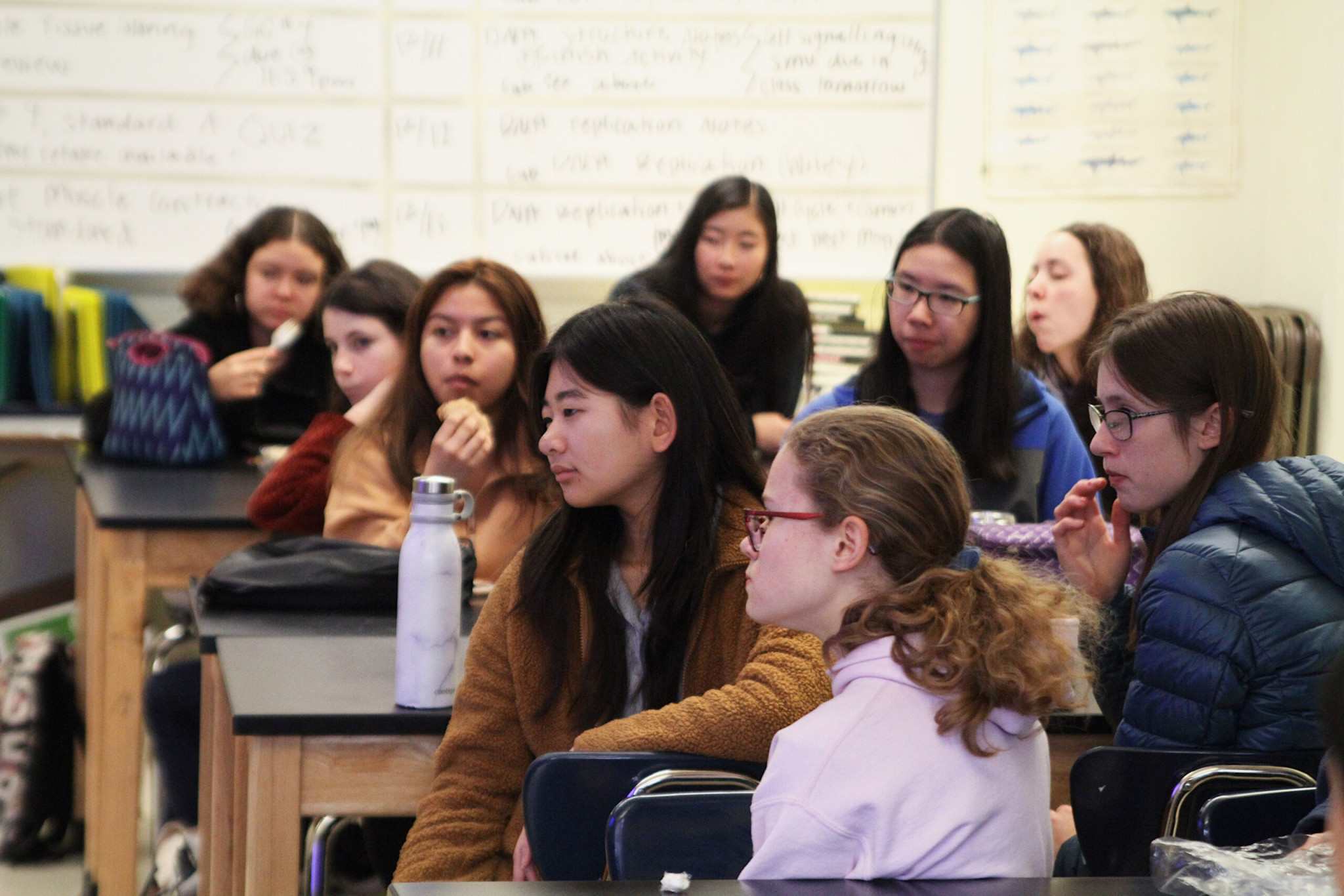Science and math are two subjects that have historically been dominated by men. According to Roberta Rincon, Ph.D., Manager of Research at Society of Women Engineers (SWE), only 13 percent of engineers and 26 percent of computer scientists are women. These kinds of statistics are not encouraging to young girls hoping to have careers in science and engineering, and it often shows in engagement in these high school courses. However, the amount of women in these careers is steadily increasing thanks to a push for inclusivity and support of girls in high school and college getting involved in science, technology, engineering, math (STEM) such as the Berkeley High School (BHS) STEMinist Club. The STEMinist Club is a club at BHS that was created as both a safe space for women and genderqueer people wanting to explore STEM fields such as engineering or chemistry who may feel underrepresented. In addition, they work to combat gender inequality issues in STEM at BHS, since most of the STEM clubs either don’t acknowledge or don’t include feminism and gender inequality issues in their mission. The BHS STEMinist club manages to both support non-male identifying students in pursuing their STEM related interests and ensure that there are safe spaces for those people when they actively begin to work in those areas. One person who was very influenced by the noticeable lack of women in the STEM field is Fatemeh Mizbani, a BHS chemistry teacher. Mizbani shared her personal journey as a young woman of color studying science, saying that she “went to school for secondary education in Iran, where there was not much stigma, especially since [she] went to an all girls school. [She] was basically fast tracked into physical science and math, so from high school on, the focus of all [her] classes were math, physics and chem.” She then went on to discuss the noticeable difference between this culture and that of American schools. “I ended up doing physics at UC Irvine, and I was one of the only girls in the classes, apart from one other girl, who was from Korea. This was when I realized that women were not getting into STEM, and I didn’t know why. However, I quickly realized that it was very much cultural. It’s not that girls cannot do STEM, it’s simply cultural,” she said. Mizbani’s main goal in becoming a teacher was to be a role model for young girls wanting to become scientists or mathematicians, and she hopes that girls today can become more comfortable in their career choices or futures in these areas. President of the STEMinist club, BHS junior Emi Rohn, summarized the overall purpose of the club, saying it was founded in order “to empower women in STEM.” She said the club aims to “provide a supportive community for students to discuss female underrepresentation in STEM and learn about STEM fields.” She then went on to discuss what they do in the club: “Each month, we focus on a different field of STEM. During our meetings, we teach students about this field and feature female guest speakers who talk about their research and experience. Some of our former guest speakers include a software engineer from Dropbox, the Head of Pediatric Endocrinology at UCSF, a microbiologist and NASA fellow, and many more. In addition to hosting guest speakers, we also participate in hands-on activities like projects and field trips. For example, last month, we spent the day at UC Berkeley shadowing female graduate students in the physical sciences.”Vice president of the STEMinist club, Natalie Couch, reiterated the importance of this club and what it provides, saying, “There’s research that shows that [for young girls], having people with shared interests and being able to envision yourself in that field helps them to actually do that and keep pursuing the things they’re interested in without feeling alienated.” She also encouraged new members to join, saying that everyone is welcome, no matter their gender. The club meets on Wednesdays at lunch and is available to contact at [email protected]. STEM is a field which influences many aspects of people’s lives, from medicine to climate science. Ensuring that there are diverse groups of people working in these areas is extremely important. In addition, many women who do end up working in these areas feel stigmatized or marginalized, both of which are feelings that no one should experience at work. Creating space for gender non-binary and female identifying scientists and mathematicians to thrive in their careers without worrying about experiencing pay disparities or sexism preventing their careers from advancing is a necessary movement. By providing this space, clubs like the STEMinist Club ensure that our society is advancing towards a more scientific, healthy, and inclusive future.
BHS STEMinist Club Promotes Future of Inclusivity in the Field

By Anjuna Mascarenhas-Swan,
December 20th, 2019




